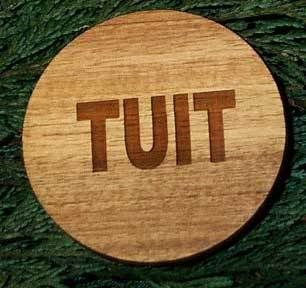G
Guest
I had just received my mineral pigments so my objective this time was to achieve as near perfect color as was possible for me. The secondary objective was to get as close as possible to a commercial appearance and regularity. Finally, I've tried under-scenting and over-scenting (accidentally) so I wanted to see if I could get the scent EO just right.
To achieve the best color I wanted to start out with as little natural color as possible, so I chose oils that were either clear liquids or white solids. Already familiar with my coconut oil being clear when melted, and being in my lard phase and knowing lard melts clear, I replaced my previous recipe's olive oil with canola oil so that the result would have minimal color. When I reached trace I could see that other than a faint slightly beige tinge it was as near to white as I've seen in my short soaping career. Here's the recipe I used:
lard 53%
canola 23.5%
coconut 23.5%

SoapCalc's numbers:
hardness 42
cleansing 16
condition 51
bubbly lather 16
creamy lather 26
iodine 58
INS 147
If my 2nd batch's hardness 44 (Miller's favorite lard olive coconut) is any indication, this batch's 42 should be fairly hard. After only 3 days the Miller's is surprisingly hard, almost as hard as commercial soap, and I expect more hardening in the next few weeks as the bars dry.
This is my best batch yet, colored perfectly, scented perfectly, nearly uniform (mostly 4 to 4.2 ounces), and nicely shaped. It's the first time I've made a batch without that "if only" feeling!
The one durned thing, I had my shea butter melted and ready to go in at trace, but I forgot, possibly because the melted shea in a clear glass dish didn't stand out to me. But no big deal I'll just put some in the next batch.
I'm done with my lard phase for the time being and I'm turning to 100% vegetable oils for the foreseeable future. I just wanted some lard samples to use for comparison. The idea of "no dead animals" really appeals to me, particularly when combined with "all natural ingredients" and "no chemicals."
Greg/Lovehound
To achieve the best color I wanted to start out with as little natural color as possible, so I chose oils that were either clear liquids or white solids. Already familiar with my coconut oil being clear when melted, and being in my lard phase and knowing lard melts clear, I replaced my previous recipe's olive oil with canola oil so that the result would have minimal color. When I reached trace I could see that other than a faint slightly beige tinge it was as near to white as I've seen in my short soaping career. Here's the recipe I used:
lard 53%
canola 23.5%
coconut 23.5%

SoapCalc's numbers:
hardness 42
cleansing 16
condition 51
bubbly lather 16
creamy lather 26
iodine 58
INS 147
If my 2nd batch's hardness 44 (Miller's favorite lard olive coconut) is any indication, this batch's 42 should be fairly hard. After only 3 days the Miller's is surprisingly hard, almost as hard as commercial soap, and I expect more hardening in the next few weeks as the bars dry.
This is my best batch yet, colored perfectly, scented perfectly, nearly uniform (mostly 4 to 4.2 ounces), and nicely shaped. It's the first time I've made a batch without that "if only" feeling!
The one durned thing, I had my shea butter melted and ready to go in at trace, but I forgot, possibly because the melted shea in a clear glass dish didn't stand out to me. But no big deal I'll just put some in the next batch.
I'm done with my lard phase for the time being and I'm turning to 100% vegetable oils for the foreseeable future. I just wanted some lard samples to use for comparison. The idea of "no dead animals" really appeals to me, particularly when combined with "all natural ingredients" and "no chemicals."
Greg/Lovehound












































